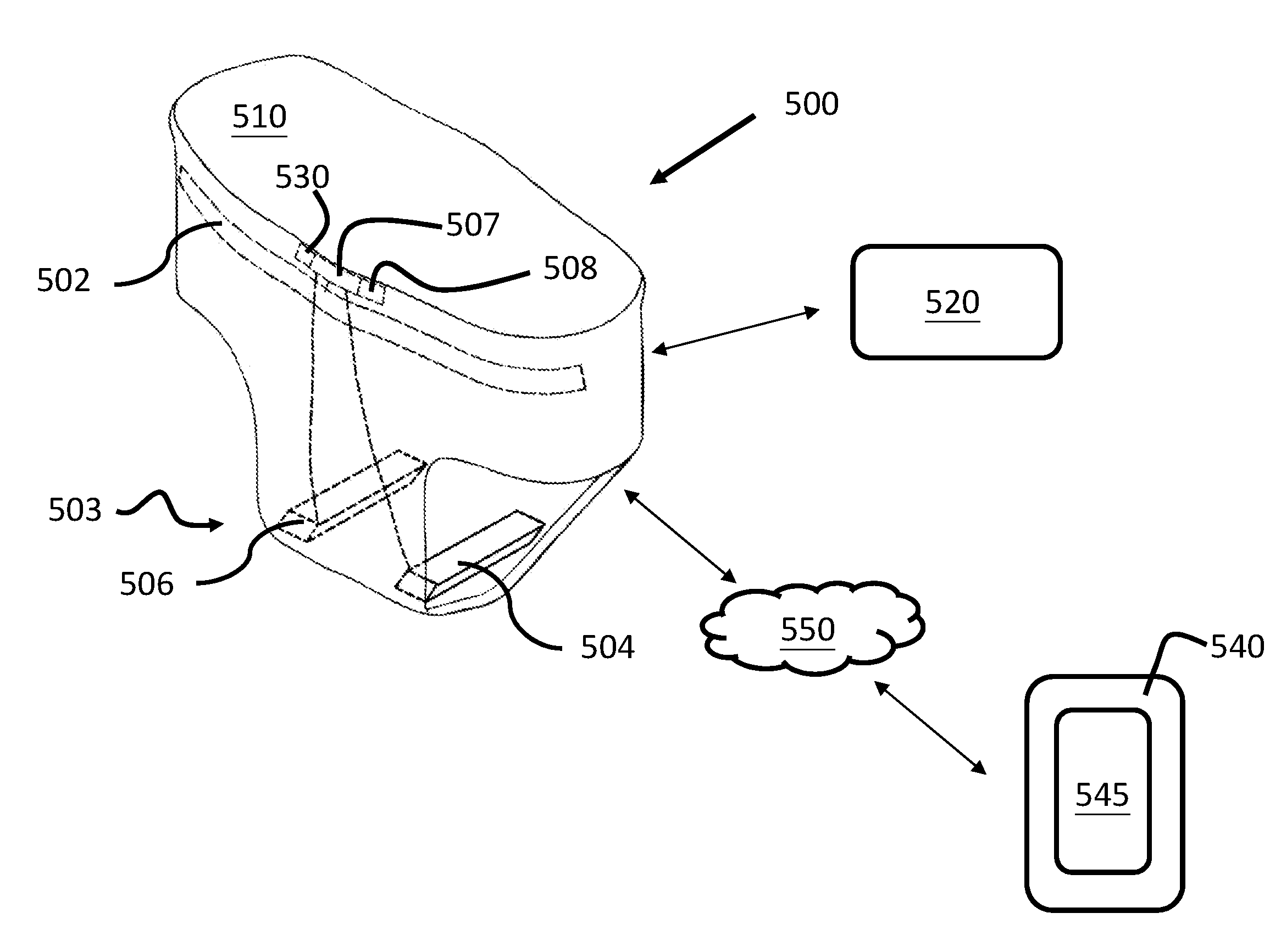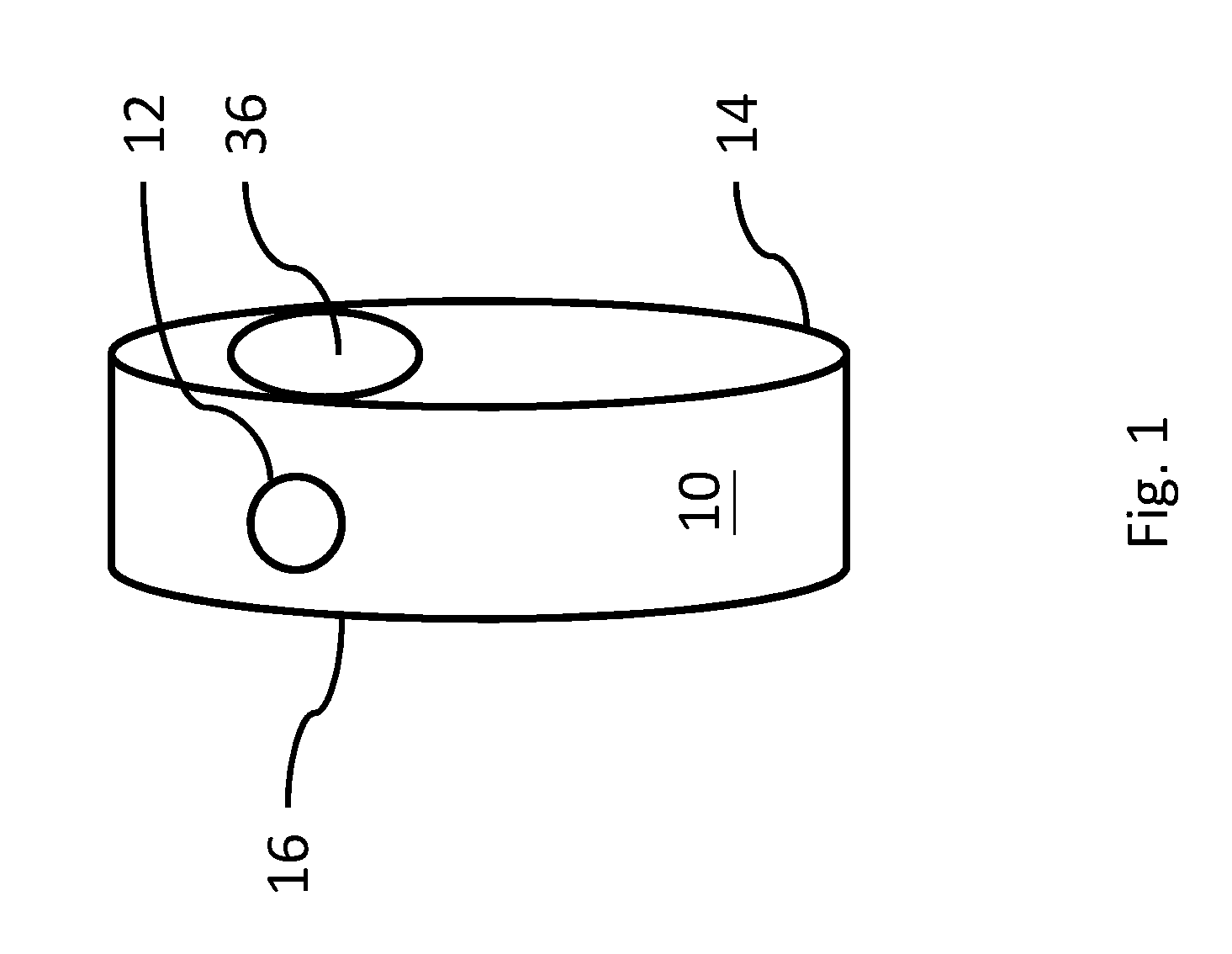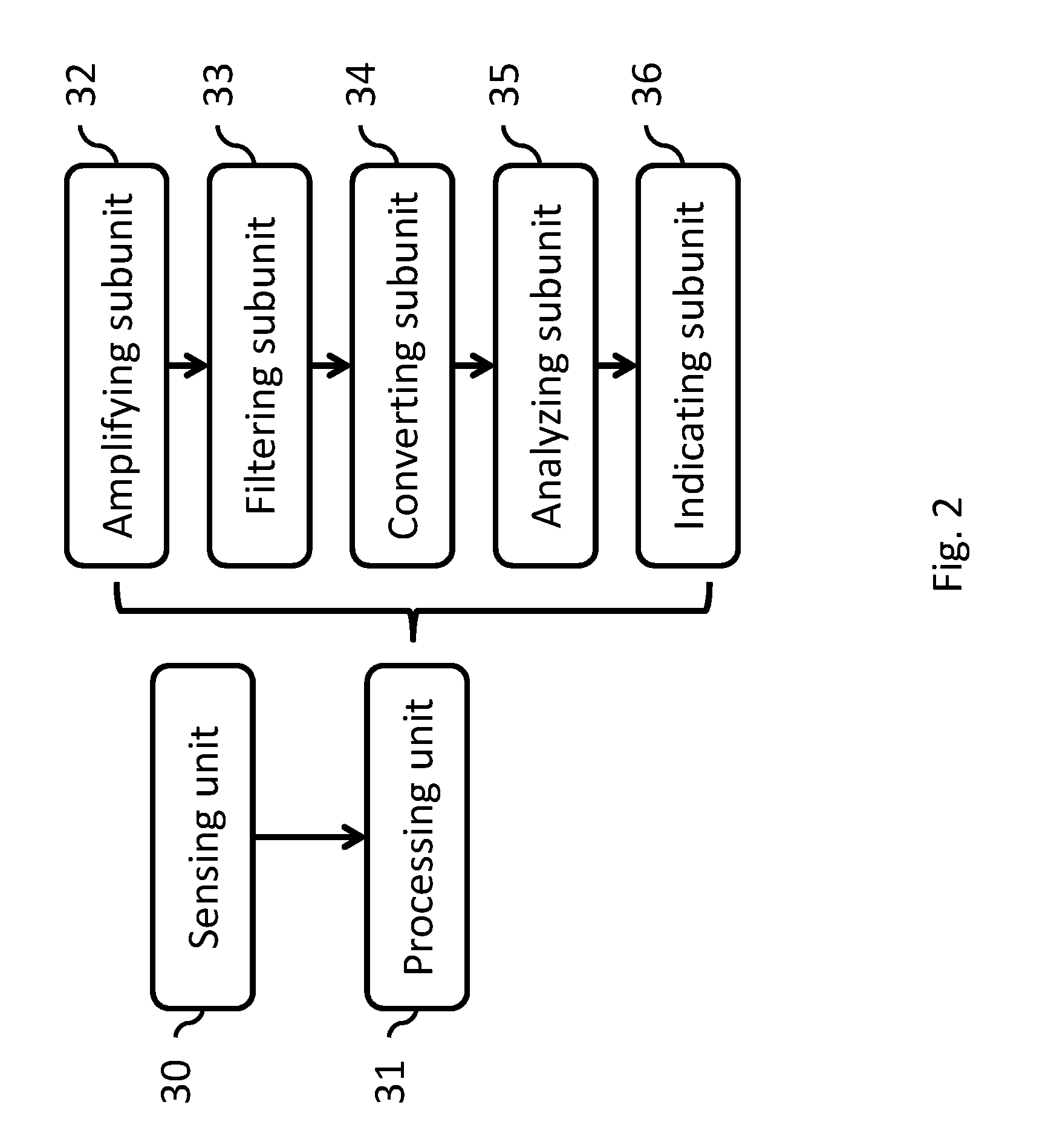Device for detecting fullness of bladder
- Summary
- Abstract
- Description
- Claims
- Application Information
AI Technical Summary
Benefits of technology
Problems solved by technology
Method used
Image
Examples
Embodiment Construction
[0020]As used herein and in the claims, “comprising” means including the following elements but not excluding others.
[0021]Referring first to FIG. 1, the first embodiment of the present invention is a device 10 for detecting the curvature change of the skin surface of a human or an animal subject comprising a housing 14 in which a sensing unit 30 and a processing unit 31 (not shown in FIG. 1) are disposed therein.
[0022]In an exemplary embodiment of the present invention, the housing 14 comprises a film 16. The outside surface of the film 16 is attached to a pre-determined area of the subject when the device 10 is in use, while on the inside surface of the film 16, the sensing unit 30 is disposed thereon. In one exemplary embodiment, the pre-determined area is the area of the lower abdominal region of a human above the pubic bone and in close proximity to the bladder. The film 16 is made of material soft enough to allow the sensing unit 30 to effectively detect the curvature change o...
PUM
 Login to View More
Login to View More Abstract
Description
Claims
Application Information
 Login to View More
Login to View More - R&D
- Intellectual Property
- Life Sciences
- Materials
- Tech Scout
- Unparalleled Data Quality
- Higher Quality Content
- 60% Fewer Hallucinations
Browse by: Latest US Patents, China's latest patents, Technical Efficacy Thesaurus, Application Domain, Technology Topic, Popular Technical Reports.
© 2025 PatSnap. All rights reserved.Legal|Privacy policy|Modern Slavery Act Transparency Statement|Sitemap|About US| Contact US: help@patsnap.com



